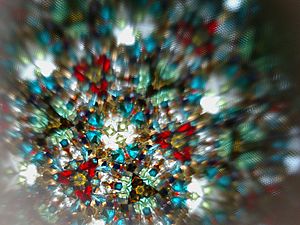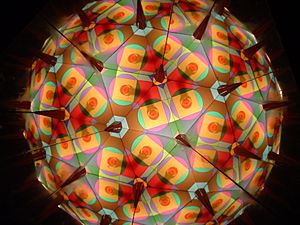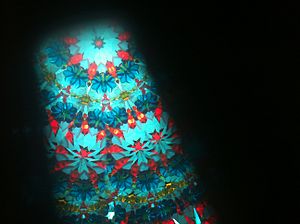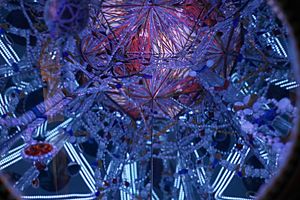Kaleidoscope facts for kids
A kaleidoscope is a cool optical toy that uses mirrors to create amazing, ever-changing patterns. When you look through it, you see colorful shapes that seem to multiply and move. This happens because of special mirrors inside that reflect objects over and over again, making a beautiful symmetrical design. Most kaleidoscopes have a tube with mirrors and a cell at one end filled with loose, colorful pieces like glass or plastic. As you turn the tube, these pieces shift, and the pattern you see changes, making each view unique!
Contents
How the Kaleidoscope Was Invented
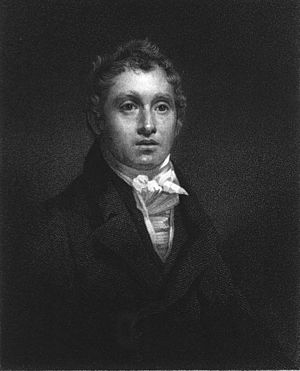
The kaleidoscope was invented by a Scottish scientist named Sir David Brewster. In 1815, he was doing experiments with light and discovered how mirrors could create these repeating patterns. Two years later, in 1817, he officially got a patent for his invention.
Brewster's first design was a simple tube. It had pairs of mirrors at one end and clear disks at the other. In between these, he placed small beads. These beads were what created the colorful, shifting images.
Early Popularity
Sir David Brewster chose a skilled lens maker, Philip Carpenter, to be the only person to produce his new invention. The kaleidoscope became a huge hit! In just three months, over 200,000 kaleidoscopes were sold in London and Paris. People loved them so much that Carpenter couldn't make them fast enough.
On May 17, 1818, Brewster allowed other manufacturers to start making kaleidoscopes too, so more people could enjoy them. Even though it was first meant to be a scientific tool, the kaleidoscope quickly became a popular toy. Brewster had hoped to make a lot of money from his invention, but a small mistake in his patent application meant that others could easily copy his design without paying him.
Modern Exhibitions
In 1987, a kaleidoscope artist named Thea Marshall worked with a science museum in Oregon, USA. Together, they created a large traveling exhibition called "Kaleidoscopes: Reflections of Science and Art." This amazing show visited 15 science museums over three years. More than a million people in the United States and Canada got to see it! The exhibition had interactive parts that helped visitors understand how kaleidoscopes work and appreciate them as both science and art.
Different Kinds of Kaleidoscopes
Over the years, people have made kaleidoscopes in many different shapes and using all sorts of materials. Some designs have added cool new features that weren't in David Brewster's original idea:
- Liquid-filled cells: Some kaleidoscopes have a special cell filled with a thick liquid. The colorful pieces inside float and move slowly and gracefully as you gently tilt the kaleidoscope.
- Wand kaleidoscopes: These were introduced around 1990. They have a clear, sealed tube attached to the kaleidoscope, which contains liquid and floating objects like glitter. As you move the wand, the objects drift past the mirrors, creating new patterns.
- Object wheels: Some kaleidoscopes have a spinning wheel or carousel attached to their center. This wheel has shapes and colors that rotate into view, adding to the kaleidoscope's image.
- Artistic exteriors: Many kaleidoscopes are now made as beautiful artworks themselves, with unique and creative outer designs.
- Large installations: You can even find huge kaleidoscopes built into buildings, becoming part of the architecture.
- High-tech versions: With modern technology, some kaleidoscopes now use computer software and digital cameras to create their patterns.
Where Kaleidoscopes Are Used
Most kaleidoscopes you see are made in large numbers from simple materials. These are often sold as fun toys for children. However, there are also very special, handmade kaleidoscopes that are true works of art. These show amazing craftsmanship and can be found in art galleries.
Some shops even specialize in kaleidoscopes, offering dozens of different types made by various artists and craftspeople. Today, many handmade kaleidoscopes come from countries like Japan, the USA, Russia, and Italy. These countries have a long history of making beautiful glass items, which is perfect for creating stunning kaleidoscopes.
Images for kids
See also
 In Spanish: Caleidoscopio para niños
In Spanish: Caleidoscopio para niños


